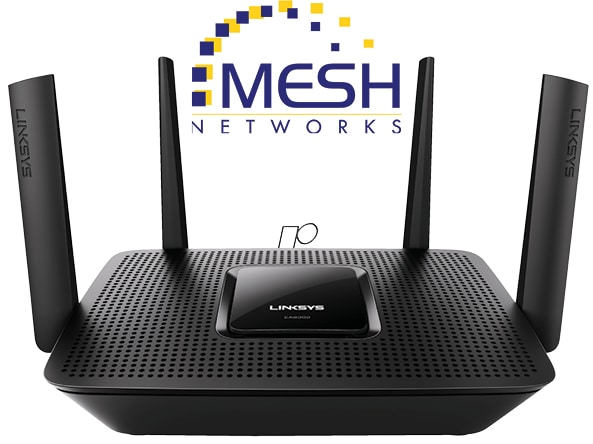Isn’t it inconvenient and time consuming to manually connect to the Wi-Fi network every time you change rooms or move to different floors in your organisation? Thankfully, with the arrival of mesh topology networking technology, Wi-Fi routers can now handle the challenge of complex routing within a large organisation, even covering an area as big as 557.4sqm (6000sq ft).
The dream of seamless connectivity will soon be a reality. While it was nearly impossible to connect an entire city with wireless technology earlier, wireless mesh networks will now enable us to connect an entire enterprise, large organisations, government bodies and college campuses, without any interruption.
Wireless mesh routers were introduced in the Indian market in January 2018, and are ready to be used at the consumer as well as the enterprise levels.
Why go for extendable routers based on mesh technology?
The frequent changes in access point authentication, the change in network connectivity speed, low bandwidth and poor connectivity are some of the challenges faced by standalone routers. And these problems are well addressed by mesh technology based extended routers.
When the area to be covered for seamless wireless connectivity is as big as 557.4m, mesh topology acts as a boon to organisations since the traditional wireless networking topology fails to deliver the required bandwidth. For example, if you are moving from one conference room on the first floor to another one on the third floor, the wireless access point changes, asking for authentication prior to being given access to the network. This often results in poor connectivity and can disrupt the ongoing meeting.

Wireless mesh nodes can be moved or removed depending on the location you are installing them in. This technology is efficient in the areas where the wireless network is intermittently blocked. For instance, an old building does not allow wireless signals to pass through the brick walls as the infrastructure is not adapted to wireless technology. Mesh wireless networking technology is adaptable and expandable, and allows the network signals to pass through the walls. Also, it provides uninterrupted service in warehouses and transportation settings.The demand for wireless connections is high when it comes to emergency responses and public safety, applications that typically mean covering a large geographical area. A wireless mesh equips you with high speed mobility and good-quality video surveillance as it delivers high throughput and very reliable wireless connectivity. This WMN (wireless mesh network) technology is a combination of WLANs (wireless large area networks) and ad hoc networks that form an intelligent, large scale and broadband network. Telemedicine projects use WMNs in emergency room links.
Dynamic changes in network topology, scalability, self-management and self-healing are some of the major features of WMN technology. If you are looking to cover large areas without sacrificing the quality of the wireless connection, wireless mesh is the technology that will solve your connectivity issues.
The traditional standalone Wi-Fi routers give you a hard time once you lose connectivity as you move further away from the router. But a mesh network creates a continuous wireless link within each access point, establishing a connection throughout your office or home and reducing the possibility of dead zones. The MIMO (multiple input and multiple output) routers are replaced with wireless mesh routers, which can also talk to multiple devices simultaneously.
Leading players like Google, Linksys and Tenda Nova have created user friendly interfaces so that you can easily manage and configure your wireless network with the help of a smartphone app. Imagine the impact of extendable routers based on mesh wireless technology, when everything starting from your watch to the TV is a smart and Internet-connected device. In fact, mesh networks can offer uninterrupted Internet connectivity to all your smart devices.
How mesh routers provide seamless connectivity
In mesh topology, your modem first connects to the primary base station and then connects to the satellite stations in weak coverage areas. Let’s assume that your primary base station is on the first floor and you have a satellite on the third floor. Now, if you are loading a Web page whose data is being retrieved from the primary base station installed on the first floor and passing this data to the satellite on the third floor, enabling you to view the Web page on that floor, you are actually using the hop process.
Your smartphone, too, will automatically get connected to the strongest Wi-Fi station depending on the location. Hence, this topology not only extends your Wi-Fi range but also helps you to connect to the strongest station. You will be in a fully automated environment where your only job will be to switch on the Wi-Fi option on your smart devices and the mesh Wi-Fi will do its job to provide you with seamless connectivity.
All about mesh networking wireless technology and how it works
The mesh portal access point generates a radio signal with the wireless mesh service’s SSID, a procedure known as black haul. It finds a receiving point signal from another mesh access point that has the strongest RSSI value, establishing a strong connection to the mesh portal SSID.
After the connection is established, it starts providing the services as configured in the controller. If the remote access point fails to connect to the nearest mesh access point within 60 seconds, it tries to connect to the next access point, following a contiguous process of choosing the access points throughout the mesh network to establish a secure connection. If all the access points fail to connect, the main controller reboots and tries again to reconnect by choosing each of the access points.
Planning a mesh topology network is important to get better results. It is recommended that you set the 802.11a radio to mesh services and 802.11g radio to client services. You can configure within the range of 1.09km or less. Also, minimising the mesh access points connected to the mesh portal is a good way to improve the performance of the network topology. Four access points to one mesh portal is the best practice for enhanced wireless connectivity.













































































What I like in mesh is it can be easily set up in that part of the home we need it where network cable cannot reach. the mesh is basically a bunch of Wi-Fi stations and it can solve most of the issues of Wi-Fi.